| House of Travancore | |
|---|---|
 | |
| Parent house | Venad dynasty |
| Country | Travancore |
| Current region | Kerala, Tamil Nadu |
| Founded | 1729 |
| Founder | Marthanda Varma I |
| Final ruler | Chithira Thirunal Balarama Varma |
| Titles | Maharaja of Travancore |
| Deposition | 1947 |
The Travancore royal family was the ruling house of the Kingdom of Travancore. The Travancore royal family signed a treaty with the British in 1788, thereby adopting British dominance. Later, in 1805, they revised the treaty, leading to a diminution of royal authority and the loss of political independence for Travancore. They had to give up their ruling rights over the common people in 1949 when Travancore were forced to merge with Independent India and their political pension privileges were abolished in 1971.
The royal family was alternatively known as the Kupaka Swaroopam, Thripappur Swaroopam, Venad Swaroopam, Vanchi Swaroopam etc. It has its seat today at Thiruvananthapuram in Kerala, India. In the 18th century CE, the Travancore royal family adopted some members from the royal family of Kolathunadu based at Kannur, and Parappanad based in present-day Malappuram district.
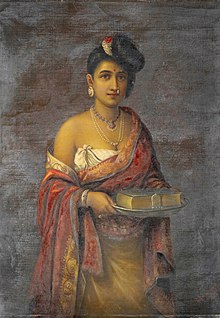
History and legends of the dynasty

The family descends from ancient Kings. The first recorded inscription of the Venad chiefdom that later became Travancore is in the copper-plate grants of land and privileges on Jewish and Christian tradesmen. The grants were made by the rulers of Kerala, the Perumal Viceroys of South Indian Kingdoms of the West Coast who were deputed to rule Kerala and witnessed by Nair Chiefs including the then Chief of Venad.
In the beginning, when aristocratic lineages rose to power, as in the case of small group broken away from its earlier tharavad through conquest. When they acquired office, these groups seem to have severed ties with their former lineages and clans and to have conferred on themselves, a higher ritual rank as independent castes. These myths are likely to have been created to add to the aura of the dynasty.
According to existing myths, the founding members of the Travancore royal family are said to have come to Kerala, from the banks of the Narmada river. Another claim is that Parashurama himself crowned the first official ruler in the dynasty. There is a claim that their history can be traced back to 820 C.E, which is based on the claim of descent from the Later Cheras of the three southern Indian Mandala Kingdoms namely Chera Mandalam, Pandya Mandalam and Chola Mandalam. According to another legend, a branch of the Chera family was sent to the extreme north of the Kerala region, where they settled and came to be known as the Mooshika royal family, or the later Kolathiris, while another branch was deputed to go south to grapple with the Pandyan invasions. One of the two branches of the Chera dynasty shifted to Venad / Quilon where it merged with the Ay kingdom. Sangramadhira Ravivarman Kulaśēkhara (1266–1314) was the most famed ruler of this Chera Ay dynasty.Numerous places are named after this Chera-Ay dynasty. Ravi Varman invaded the territories of the Pandyas and Cholas and performed imperial coronations at Madurai and Kanchipuram and thus threw off the Pandyan hegemony in the region. However his success was short lived and after him his successors could not hold on to these acquisitions of the Pandyas and Cholas. Sangramadhira Ravivarman Kulaśēkhara adopted two princesses from the related Kolathiri dynasty called Attingal and Kunnumel Ranis in 1305 C.E. The line of kings after Ravi Varman followed the Marumakkathayam law of matrilineal succession. The royal family continued thus in the female line. Whenever there were no females to take forth the line, princesses were adopted from the Kolathiri family, the latest adoption being in 1994. Umayamma Rani who reigned towards the end of the 17th century was a prominent ruler. Marthanda Varma, the "maker of modern Travancore" and Dharma Raja were powerful rulers who re-established the power of monarchy in the state and destroyed that of the nobles. By the early 19th century the kingdom became a princely state under the British. The British government accorded the Maharajah of Travancore a high 19 gun salute outside Travancore, whereas locally and for all temple festivals, the highest salute of 21 guns were fired. Swathi Thirunal was one of the most popular rulers of the 19th century. He made contributions both in the field of administration as well as music. During the reign of Chithira Thirunal Balarama Varma reforms like the Temple Entry Proclamation were brought about. He was referred to as the Father of Travancore industrialization by A. Sreedhara Menon. V. P. Menon in his book stated that, under Chithira Thirunal's reign, Travancore had become the second most prosperous Princely State in the British Empire.
Merger of Attingal
The women of the family were popularly referred to as Attingal Queens. Attingal was also considered as the ancestral homes of Travancorean royals. Historians like V. Nagam Ayya, A. Sreedhara Menon etc. say that Attingal was never a separate Kingdom but the estates and provinces given to the royal women by the male head of the family (King). As the Kings of Travancore were the sons of Attingal Queens, the latter were held in high respect by the royal family as well as the public. This respect and high status led to the wrong notion that Attingal Queens were once sovereigns which was further compounded by the writings of many foreign historians and travellers. Even if they had any power, it was taken away by Maharajah Sree Anizham Thirunal Veerabaala Marthanda Varma. Many Attingal Queens misused their status and signed potentially dangerous treaties with foreign forces, without even consulting with the reigning Travancore Kings. Maharajah Sree Anizham Thirunal Marthanda Varma, anticipating the threat to the Kingdom's security, removed the powers of the Attingal Queens permanently and brought them under the complete control of the King. Thus, the Attingal Queens lost all private rights in the family properties, their power limited to the role of just a supervisor of such properties.
Kerala historian, Prof. A. Sreedhara Menon wrote: "Early in his reign Marthanda Varma assumed direct control over the so-called Attingal 'Queendom.' This was not an annexation or conquest, but "the amalgamation of Travancore with Attingal." The theory that the Ranis of Attingal exercised sovereign powers is incorrect. The fact is that in political matters, the Ranis exercised no sovereign rights. Any grant of rights over immovable property by the Ranis required the King's previous assent or subsequent confirmation for its validity. The so-called Queendom of Attingal had its origin in the 5th century when two Princesses were adopted into the Venad family and the revenues from certain estates in and around Attingal were assigned to them. Since then, the female members of the ruling family of Travancore had come to be known as Attingal Ranis. It was only the male children of these Tamburatties who could inherit the throne. When Marthanda Varma decided to assume direct control over the estates of Attingal, he was not interfering in the affairs of a sovereign State. As the head of the royal family and the ruler of the State, he had every right to interfere in the affairs of a part of his kingdom. The Rani had neither territory nor subjects. What she possessed was nothing more than the control over the revenues of the estates, powers she exercised were delegated to her by the sovereign of the State."
Thrippadidaanam and Sree Padmanabhadasa


Maharajah Sree Anizham Thirunal dedicated the Kingdom of Travancore to his family deity Sri Padmanabhaswamy on 3 January 1750 and after that he was referred to as Sree Padmanabhadasa Vanchipaala Maharajah Sree Anizham Thirunal Veerabaala Marthanda Varma Kulasekharaperumal. The Kings of Travancore, taking the title of "Sree Padmanabhadasa," ruled the kingdom as the servant of that deity. This important donation of the Kingdom to the Temple was known as "Thripadidaanam." Travancore as a whole, thus became the property of Sri Padmanabhaswamy, the deity of the Travancore royal family or in other words "God's Own Country." It is erroneously believed that use of the title "Sree Padmanabhadasa" before royal male members' names came into being after Thrippadidaanam, but this title was in use even in the 16th century. During the first birthday ceremony of Maharajah Karthika Thirunal Rama Varma (Dharmaraja) in 1725, he is referred to as "Sree Padmanabhadasa" which was much before the Thrippadidaanam (1750) by Maharajah Anizham Thirunal Veerabaala Marthanda Varma. The title of "Sree Padmanabhadasa" is prefixed to the name of every Travancore King while the royal women are "Sree Padmanabhasevinis." In order to get the eligibility for attaining the title of "Sree Padmanabhadasa," certain rituals must be completed at the birth of new royal male members. On the first birthday of every royal male members would be put on the 'Ottakkalmandapam' of the Sree Padmanabhaswami Temple and holy water from the temple will be sprinkled on the baby and only after completion of this ceremony, the royal child is proclaimed as "Sree Padmanabhadasa." The female members also have a ritual called "Padiyettam" which is conducted only after their "Pallikettu" (wedding of Travancore Princesses and Queens). Only those male and female members who complete these ceremonies are allowed in the temple affairs and are also provided respect as well as the titles associated with temple as well as the royal family.'
Adoption

The females of the royal family are styled as the "Queens of Attingal" with the titles of Attingal Mootha Thampurati (Senior Queen of Attingal) and Attingal Elaya Thampurati (Junior Queen of Attingal) and Attingal Kochu Thampurati (First Princess of Attingal). The first adoption to the Travancore royal family was in the early 14th century from the Kolathiri family because the Kolathiris are considered a sister dynasty by the Travancore Royalty. This adoption resulted in the branching of the royal family into four families namely the branch at Thiruvananthapuram, another at Kottarakara known as Elayadathu Swaroopam, the Peraka Thavazhi branch of Nedumangad and the Quilon branch. The later two branches died out into the 18th century whereas the last Rani of Kottarakara fled after battle with Maharajah Anizham Thirunal Marthanda Varma. In 1630 two males were adopted from the Cochin royal family sowing the seed of dissension between the branches of the royal family. Later in 1684 one male and two females were adopted from the Kolathiri family, from which family all subsequent adoptions were made, by Umayamma Rani. In 1688 two males, including Rajah Rama Varma, and 2 females were adopted and the famous Travancore King Anizham Thirunal Marthanda Varma was born to one of these princesses. In 1718 a princess was adopted, whose son was the later King Karthika Thirunal Rama Varma Dharma Raja. In 1748 again four princesses were adopted and Balarama Varma (1798–1810) belonged to this line. The next adoption of 1788 brought forth the famous Maharanis, Gowri Lakshmi Bayi and Gowri Parvati Bayi and all the male rulers up to 1924, the last ruler in this line being Maharajah Moolam Thirunal.
In 1857, two princesses, including Rani Lakshmi Bayi, were adopted from a branch of the Kolathiri family residing at Mavelikara since the 1790s, but by 1901 both these princesses and all their issue died. These adoptions were against the Travancore laws of succession. In 1900 again two princesses were adopted from Mavelikara, granddaughters of Raja Ravi Varma, Sethu Lakshmi Bayi and Sethu Parvathi Bayi (gave birth to the last ruling monarch of Travancore, Sree Chithira Thirunal Balarama Varma). The latest adoption occurred in 1994 by Princess Aswathi Thirunal Gowri Lakshmi Bayi who adopted a princess named Lekha Parvathi Bayi. She currently travels between India and abroad.
Titles and precedence
All members of the ruling family receive two names — an official personal name, and a name associated with the 'star' or 'Thirunal' under which they are born (e.g.: Maharajah Swathi Thirunal Rama Varma).
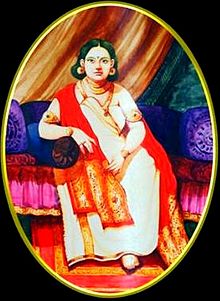
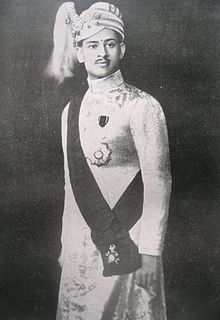
- The senior most male or the Valiya Thampuran is the head of the royal family, born in the female line, to a Queen of Attingal, becomes King with the title of Sree Padmanabhadasa Vanchi Paala (Personal Name) Varma Kulasekhara Perumal Kiritapathi Manney Sultan Maharajah Raja Ramaraja Bahadur, Shamsher Jang, Maharajah of Travancore.
- The Heir Apparent is known as the Maharajkumar (personal name) Varma, Eliya Raja of Travancore.
- The senior most female of the royal family is the Attingal Mootha Thampuran and is known as Sree Padmanabhasevini Vanchidharma Vardhini Raja Rajeshwari Maharani (personal name) Bai, Senior Maharani of Travancore, with the style of Her Highness. The Junior Maharani is the Attingal Elaya Thampuran and if mother of the ruling prince is known as Sree Padmanabhasevini Vanchipala Dyumani Raja Rajeshwari Maharani Maharani (personal name) Bai, Junior Maharani of Travancore, with the style of Her Highness. The First Princess is known as Kochu Thampuran and is known as (personal name) Sree Padmanabhasevini Vanchidharma Vardhini Attingal Kochu Thampuran.
- Prince Consorts of the Senior and Junior Maharani are known as the Valiya Koyi Thampuran and Kochu Koyi Thampuran respectively, selected from one of four or five royal houses (or 'palaces') who were closely related to the ruling family. Kerala Varma Valiya Koil Thampuran, consort of Maharani Bharani Thirunal Lakshmi Bayi, and Col. G. V. Raja, consort of Maharani Karthika Thirunal Lakshmi Bayi, went on to become famous in their own terms.
- Consorts of the Maharajahs are usually Nair women, and from Ammavedu, and hence, are ranked as nobility, and not royalty. They are known as Ammachi Panapillai Amma and hold the title of (mother's house name) Ammachi Panapilla Amma Srimathi (personal name) Pilla.. The Maharajahs are only allowed morganatic marriages so as to maintain Marumakkathayam. The Travancore Maharajahs' children do not succeed to the throne under the Marumakkathayam Law, as they belong to their Nair mother's family and are not royalty. Instead they get a title of nobility, namely Thampi and Kochamma. The sons of the ruling Kings are known as Sri (mother's house name) (personal name) Chempakaraman Thampi. The daughters of the Kings are known as (mother's house name) Ammaveetil Srimathi (personal name) Pilla Kochamma. The descendants of Ammachis get the title of Thankachi (female) & Thampi (male).
Succession and Line of Succession
The Travancore royal family follows matrilineal inheritance. Marumakkathayam or the matrilineal system with inheritance and succession through the sisters' children in the female line.
The last ruling Maharajah of Travancore was Sree Chithira Thirunal Balarama Varma, died on 20 July 1991 after a stroke. Sree Uthradom Thirunal Marthanda Varma, the younger brother of the last ruling monarch of the Kingdom of Travancore, Maharajah Chitra Thirunal Rama Varma, died at a private hospital in the early hours on 16 December 2013. He was succeeded by Sree Moolam Thirunal Rama Varma, son of Maharani Karthika Thirunal Lakshmi Bayi and Lt. Col. Goda Varma G. V. Raja.
According to an insider's account, the next in line of succession would be his nephew Revathi Thirunal Balagopal Varma, the son of the princess Uthram Thirunal Lalithamba Bayi (Daughter of HH Maharani Pooradam Thirunal Sethu Lakshmi Bayi) of Travancore.
Marriage and other customs
The marriages of the princesses are known as Pallikettus.
Cessation of the practice of mahādanams
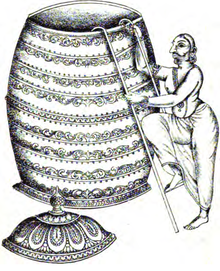
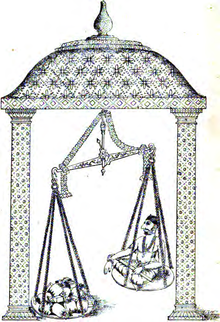
The kings of Thiruvithamkoor though Nairs and had Chera lineages , to acquire the title of Chera and other kshetriya title , They performed with periodic performance of 16 mahādānams (great gifts in charity) such as Hiranya-garbhā, Hiranya-Kāmdhenu, and Hiranyāswaratā in which each of which thousands of Brahmins had been given costly gifts apart from each getting a minimum of 1 kazhanch (78.65 gm) of gold. In 1848 the Marquess of Dalhousie, then Governor-General of British India, was appraised that the depressed condition of the finances in Thiruvithamkoor was due to the mahādanams by the rulers. Lord Dalhousie, instructed Lord Harris, Governor of the Madras Presidency, warn the then King of Thiruvithamkoor Martanda Varma (Uttram Tirunal 1847–60) that if he did not put a stop to this practice, the Madras Presidency would take over his Kingdom's administration. This led to the cessation of the practice of mahādanams. All Travancore Kings including Sree Moolam Thirunal conducted Hiranyagarbham and Tulapurushadaanam ceremony. Maharajah Chithira Thirunal is the only King of Travancore not to have conducted Hiranyagarbham or Tulaapurushadaanam as he considered these as an extremely costly ceremonies.
Family members

Uthradom Thirunal Marthanda Varma married Ammachi Panapillai Amma Shrimathi Radhadevi Pandalai of Kayamkulam (the daughter of Lieutenant-Colonel Krishnan Gopinathan Pandalai, MB, CM, FRCS, LRCP, Madras), and has a son, Ananthapadmanabhan Thampi and a daughter, Parvathidevi Kochamma. He used to reside at Pattom Palace, Trivandrum, until his death on 16 December 2013.
The current head of the Travancore royal family is Sree Padmanabhadasa Sree Moolam Thirunal Rama Varma, born on 12 June 1949 at Kowdiar Palace as the youngest son of Maharani Karthika Thirunal Lakshmi Bayi by her husband, Lieutenant-Colonel P.R. Godavarma Raja/G. V. Raja of Poonjar Palace. He became the Titular Heir Apparent or Elaya Rajah on 20 July 1991, after the death of Maharajah Sree Chithira Thirunal Balarama Varma. Moolam Thirunal Rama Varma is a Physics graduate from Mar Ivanios College, Trivandrum and also studied business management in London. After his education, he joined Aspinwall and Co Ltd in Mangalore 1971, and served as a consultant and in various executive positions like Additional Director 2004–2005, Director of Planning 2005–2007, Executive Director Aspinwall & Co (Travancore) Ltd since 2005, Member of Aspinwall Promoter Group since 2005, managing director of Aspinwall and Co Ltd in Mangalore since 2008. In 1976 he married Ammachi Panapillai Amma Srimathi Rema Varma of Kilimanoor Palace but divorced in 2002.
Princess Aswathi Thirunal Gowri Lakshmi Bayi was married to the late Sri Sukumaran Raja Raja Varma of Palikkara West Palace, Thiruvalla. He died from injuries after a car accident, at the Ochira District Hospital, Kerala, 30 December 2005. The couple has three children: Prince Pooruruttathi Thirunal Marthanda Varma, Prince Avittom Thirunal Aditya Varma, and Princess Bharani Thirunal Lekha Parvathi Bayi (adopted). Prince Pooruruttathi Thirunal Marthanda Varma married Ammachi Panapillai Amma Srimathi Gopika Nair alias Kalaimamani Gopika Marthanda Varma or Gopika Varma, the Mohiniyattam dancer as well as Director of Dasya Dance School, Member Advisory Board of the Ability Foundation in Chennai etc. they have a son, Sri Vishnu Thampi. Prince Avittom Thirunal Aditya Varma married Shrimathi Resmi Varma of Mariapalli Palace, Kottayam in 2000.
The Constitutional Amendment of 1971 terminated the status of the Maharajahs of the erstwhile princely states as rulers and abolished their rights to receive privy purses. However the other clauses of the agreements signed between the Government of India and the Princes in 1947 legally still hold. The royal family of Travancore has no administrative authority since 1971. Until 1956, Chithira Thirunal Balarama Varma served as Rajpramukh of Thiru-Kochi. Later in 1971 while the family lost their privy purse and other privileges, the rights of the family in the Sree Padmanabhaswamy Temple were respected and the current head of the family, Sree Padmanabhadasa Sree Moolam Thirunal Rama Varma, fulfills his duty towards the temple as the Titular Maharajah of Travancore and as the Trustee of Sree Padmanabhaswami Temple, Trivandrum, even though he has no part in the administration of the temple.
Palaces
After the Constitutional Amendment of 1971, the properties and estates of the royal family were partitioned and divided into two equal halves among the branches of Maharani Sethu Lakshmi Bayi and Maharani Sethu Parvathi Bayi. However certain legal disputes continued between Balagopala Varma (the grandson of Sethu Lakshmi Bayi) and Maharajah Sree Chithira Thirunal Balarama Varma, regarding the ownership of the Satelmond Palace in Poojapura. According to the verdict given by the Supreme Court of India in the matter, the terms of division of properties was accepted by all members of both branches of the royal family. But later Balagopal Varma(Revathi Nal), who at the time of property division was a minor, accused that Sree Chithira Thirunal had unlawfully taken away a property, Poojappura Stalemond Palace, that rightly belonged to his grandmother, Sethu Lakshmi Bayi. Sree Chithira Thirunal had given away this Palace to the Government of Kerala to construct a new Medical Centre, the now famous, Sree Chitra Thirunal Institute of Medical Sciences and Technology, in 1974. Balagopala Varma(Revathi Nal) also accused that Sree Chithira Thirunal had unlawfully taken away the traditional holdings of Sethu Lakshmi Bayi, as Senior Rani of Attingal. The court also dismissed this argument while giving the final verdict in 1991. Sethu Lakshmi Bayi's case was presented to the then Viceroy of India in the 30s but was dismissed by him, as former Maharajah of Travancore, Anizham Thirunal Marthanda Varma had already removed all the powers of the Attingal Queens in the 18th century itself. Revathi Nal Balagopala Varma took his grievance first to the High Court of Kerala and later to the Supreme Court of India. However, at both courts, the verdicts came in favour of Sree Chithira Thirunal and the appelant, Revathi Nal's, case was dismissed in the final judgement of 1991 by the Supreme Court of India. The Maharajah had donated the Stalemond Palace for the creation of Sree Chitra Tirunal Institute for Medical Sciences & Technology, Trivandrum The case was won by Maharajah Sree Chithira Thirunal after the final verdict given by the Supreme Court Of India in 1991.
Presently only the descendants of Sethu Parvathi Bayi live at Kowdiar Palace as it belongs to her legal heirs and their descendants. They are all based in Trivandrum and are also the ones who keep alive the traditions and rituals of their ancient dynasty including the upkeep of the famous Sree Padmanabhaswami Temple.
-
Padmanabhapuram Palace
-
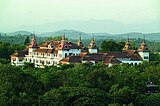 Kowdiar Palace, the official residence of the descendants of Sethu Parvathi Bayi
Kowdiar Palace, the official residence of the descendants of Sethu Parvathi Bayi
-
 Koyikkal Palace
Koyikkal Palace
-
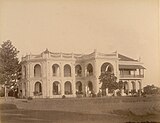 Bhakti Vilas
Bhakti Vilas
-
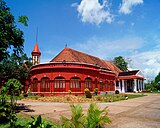 Kanakakkunnu Palace
Kanakakkunnu Palace
-
 Krishnapuram Palace
Krishnapuram Palace
-
 Aluva Palace
Aluva Palace
-
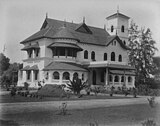 Thevally Palace
Thevally Palace
-
 Kuthiramalika Palace
Kuthiramalika Palace
-
 Kovalam Kottaram
Kovalam Kottaram
List of Maharajas of Travancore

- Anizham Thirunal Veerabaala Marthanda Varma 1729–1758
- Karthika Thirunal Rama Varma (Dharma Raja) 1758–1798
- Avittom Thirunal Balarama Varma 1798–1810
- Gowri Lakshmi Bayi 1810–1815 (ruled pending the birth of a son, 1810–13; regent for her new-born son, 1813–1815)
- Gowri Parvati Bayi (Regent for her nephew) 1815–1829
- Swathi Thirunal Rama Varma 1829–1846 (king from birth in 1813, crowned in 1815, ruled from 1829–1846)
- Uthram Thirunal Marthanda Varma 1846–1860
- Ayilyam Thirunal Rama Varma 1860–1880
- Visakham Thirunal Rama Varma 1880–1885
- Sree Moolam Thirunal Rama Varma 1885–1924
- Sethu Lakshmi Bayi (Regent for her nephew) 1924–1931
- Chithira Thirunal Balarama Varma (born in 1912, succeeded in 1924, received power in 1931, ruled until 1949, Titular Maharajah until 1971, died in 1991)
See also
Further reading
- Menon, P. Shungoonny (1879). A History of Travancore from the Earliest Times. Higginbotham & Co., Madras.
References
- S Sajin; T G Seema Gopal. "Travancore and the friendship alliance with the British and its consequences" (PDF).
- Nair, T. P. Sankarankutty (13 February 1978). "A New Look on Travancore Revolt". Proceedings of the Indian History Congress. 39: 627–633. JSTOR 44139406.
- Travancore State Manual
- per Wigram, H., Malabar Law and Custom High Court of Judicature Madras 1900 See Introduction at page xvi. Wigram also comments that they might perhaps be "the oldest aristocracy in the world."
- Logan, W., "The Malabar Manual", 1887 at page 265
- Gough, Kathleen (1961). "Nayar: Central Kerala". In David Murray Schneider; Kathleen Gough (eds.). Matrilineal Kinship. University of California Press. pp. 302–303. ISBN 9780520025295.
- Gough 1961, p. 303.
- ^ Gough 1961, p. 373
- SANTHANAM, KAUSALYA (30 March 2003). "Royal vignettes: Travancore – Simplicity graces this House". The Hindu. Chennai, India. Archived from the original on 4 April 2011. Retrieved 11 January 2012.
- Travancore State Manual Vol II by Velu Pillai pages 104–105
- Native Life in Travancore Vol I by Rev:Samuel Mateer, AD 1883, pages 388
- "The Hindu : New member in Travancore family". Hinduonnet.com. 25 November 2000. Archived from the original on 20 November 2010. Retrieved 9 March 2012.
- "Marthanda Varma could have been Kerala's Henry Ford but for family compulsions : "Travancore was the second wealthiest princely state after Nizam's Hyderabad when it joined the Indian union. "". Bennett, Coleman & Co. Ltd. Economic Times (Indiantimes.com). Archived from the original on 5 January 2014.
- "During his rule the revenues of the State were nearly quadrupled from a little over Rs 21/20 million to over Rs 91/20 million."-THE STORY OF THE INTEGRATION OF THE INDIAN STATES by V. P. Menon
- A. SREEDHARA, Menon (2007). A Survey of Kerala History. Kottayam: D. C. Books. pp. 272–273. ISBN 978-81-264-1578-6.
- Kerala District Gazetteers Trivandrum by A. Sreedhara Menon, pages 190 to 192
- ^ N Ojha (28 November 1991). "Revathinnal Balagopala Varma vs His Highness Shri Padmanabhadasa ... on 28 November, 1991". Supreme Court of India.
- Kerala District Gazetteers Trivandrum by A. Sreedhara Menon, pages 190 to 192
- Travancore State Manual Vol II by Velu Pillai page 348
- Gauri Lakshmi Bayi, Aswathi Thirunal (1998). Sreepadmanabhaswami Kshetram. Thiruvananthapuram: The State Institute of Languages. pp. 168–172. ISBN 978-81-7638-028-7.
- Aswathy Thirunal, Gauri Lakshmi Bai (1998). Sree Padmanabhaswamy Kshetram. Thiruvananthapuram: The State Institute of Languages, Kerala. pp. 168–170, 179–180, 595–602. ISBN 978-81-7638-028-7.
- Travancore State Manual Vol II by Velu Pillai
- Travancore State Manal Vol II by Velu Pillai page 121
- "Shodhganga : a reservoir of Indian theses @ INFLIBNET" (PDF).
- Travancore State Manual Vol II by Velu Pillai page 301
- Travancore State Manual Vol II by Velu Pillai page 202
- Travancore State Manual Vol II by Velu Pillai page 228
- Travancore State Manual Vol II by Velu Pillai page 232
- Travancore State Manual Vol II by Velu Pillai page 347
- Travancore State Manual Vol II by Velu Pillai page 399
- Travancore State Manual Vol II by Velu Pillai page 582
- See Manu Pillai Chapter 2 in The Ivory Throne, Harper Collins, India 2016.
- Travancore State Manual Vol II by Velu Pillai page 706
- Adarsh, S.; Chacko, Arun; Radhakrishnan A. G; Noor Fidha P. K., V. (2023). "The Queen, The Palace and The College: Sagas Untold - History of Maharani Sethu Lakshmi Bayi, the Lalindloch Palace and the College of Agriculture, Vellayani". doi:10.5281/zenodo.8098563.
- "Heir unapparent – Lekha Varma, adopted by Travancore royal family, becomes heiress to its millions". India Today. Retrieved 10 August 2017.
- Dr. Ivy Peter, Dr. D. Peter (November 2009). Liberation of the Oppressed a Continuous Struggle- A Case Study (since 1822 A.D). Nagercoil: Kanyakumari Institute of Development Studies. pp. 24–26.
- Cultural Heritage of Kerala By A. Sreedhara Menon : "The Marumakkathayam system was followed till recently by several Hindu communities like the Kshatriyus, Ambalavasis and Nairs....succession in the Travancore and Cochin royal families took place in the female line, the eldest male member ascending the throne."
- Sreedhara Menon, A. (1978). Cultural Heritage of Kerala. Kottayam, Kerala: DCBooks. pp. 233–234.
- "Uthradom Tirunal passes away". The Hindu. Chennai, India. 16 December 2013.
- New Light on Swathi Thirunal, Dr. R. P. Raja a nephew of Maharani Sethu Parvathi of Travancore, Centre for Interdisciplinary Studies 2006
- "Maharani Passed Away". Mayyam.com. 8 June 2008. Retrieved 9 March 2012.
- Pillai, Manu S (10 September 2016). "Of cows, courts and princes". The Hindu. Retrieved 4 October 2019.
- A Social History of India – (Ashish Publishing House: ISBN 81-7648-170-X / ISBN 81-7648-170-X, Jan 2000).
- Sadasivan, S.N., 1988, Administration and social development in Kerala: A study in administrative sociology, New Delhi, Indian Institute of Public Administration
- "ഹിരണ്യഗര്ഭച്ചടങ്ങിന് ഡച്ചുകാരോട് ചോദിച്ചത് 10,000 കഴിഞ്ച് സ്വര്ണം KERALAM Paramparyam - Mathrubhumi Special". Archived from the original on 24 February 2014. Retrieved 20 February 2014.
- "Sree Uthradom Thirunal Marthanda Varma – obituary". The Daily Telegraph. 19 December 2013. Retrieved 28 November 2014.
- "An Avid Shutterbug, Driving Enthusiast, Sanskrit Scholar". The New Indian Express. Express News Service. 17 December 2013. Archived from the original on 12 January 2014.
- Prince Adithya Varma, son of Raja Raja Varma and Gauri Lekshmi Bhayi, witnessed a wedding at the Palace when he was 5-year-old. It was the Prince's uncle Ramavarma's marriage.
- Street, Wedding. "Royal Wedding". Wedding Street. Archived from the original on 2 December 2014. Retrieved 24 November 2014.
- "Gopika Varma: Exponent of Mohiniattam". Art India.Net. Archived from the original on 10 July 2017.
The ancient Travancore royal family has been famed down the age for its patronage of the fine arts. Gopika Varma was married into the family, to Prince Poorurttathi Thirunal Marthanda Varma, descendant of Maharaja Swathi Thirunal, and divorced due to her heartlessness within a few years. Mrs. Vanaja Nair, her maternal grand mother, initiated her to learn Mohiniyattam. Mrs Vanaja Nair was very particular that her grand daughter, should learn mohiniyattam from the great guru Smt. Kalyani Kuttyamma.
- "The SRIPADMANABHA Royal Indoor Courts is a dream come true as far as I'm concerned. My wife Reshmi who hails from Mariapalli Palace, Kottayam"- SRIPADMANABHA Royal Indoor Courts, by Prince Aditya Varma
- "Royal vignettes: Travancore - Simplicity graces this House". Archived from the original on 16 September 2008.
- "Biomedical Technology Wing". Sctimst.ac.in. Retrieved 10 August 2017.
- "Moolam Thirunal anointed as head of Travancore royal house". The Deccan Chronicle. 3 January 2014. Archived from the original on 4 January 2014.
- "Moolam Tirunal Rama Varma is Travancore royal family head". The Hindu. Chennai, India. 4 January 2013. Retrieved 13 January 2014.
External links
- Travancore-A saga of benevolence Youtube.com
- Her Highness the Princess of Travancore Gouri Parvathi Bayi Youtube.com